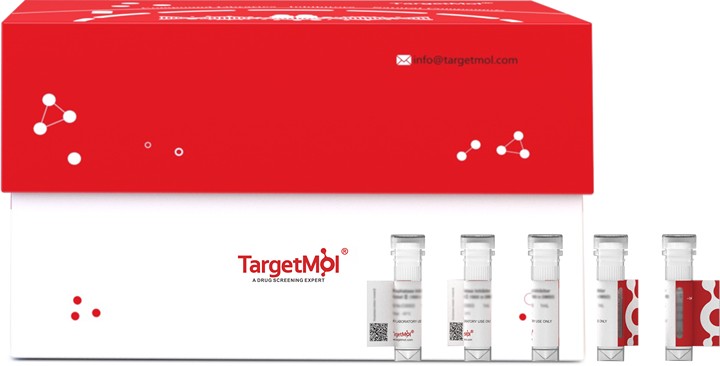
Relaxin 1/RLN1 Protein, Human, Recombinant (His)
TMPY-01826
Overview
- SupplierTargetMol Chemicals
- Product NameRelaxin 1/RLN1 Protein, Human, Recombinant (His)
- Delivery Days Customer16
- CertificationResearch Use Only
- Molecular Weight20 kDa (predicted); 20 kDa (reducing conditions)
- Scientific DescriptionRelaxin-1, also known as Prorelaxin H1 and RLN1, is a secreted protein that belongs to the insulin family. It is a peptide hormone that was first described in 1926 by Frederick Hisaw. Since its discovery as a reproductive hormone 8 years ago, relaxin has been implicated in a number of pregnancy-related functions involving extracellular matrix (ECM) turnover and collagen degradation. It is now becoming evident that relaxins ability to reduce matrix synthesis and increase ECM degradation has important implications in several nonreproductive organs, including the heart, lung, kidney, liver and skin. The relaxin-like peptide family belongs in the insulin superfamily and consists of 7 peptides of high structural but low sequence similarity; relaxin-1 (RNL1), relaxin-2 (RNL2) and relaxin-3 ( RNL3), and the insulin-like (INSL) peptides, INSL3, INSL4, INSL5 and INSL6. The functions of relaxin-3, INSL4, INSL5, INSL6 remain uncharacterised. Relaxin-1 / RLN1 is an ovarian hormone that acts with estrogen to produce dilatation of the birth canal in many mammals. Relaxin-1 / RLN1 may be involved in remodeling of connective tissues during pregnancy, promoting growth of pubic ligaments and ripening of the cervix. Relaxin and estrogen appear to play protective roles against airway fibrosis, airway SM thickening, and cardiac hypertrophy. Relaxin may also provide a means to regulate excessive collagen deposition during kidney development and in diseased states characterized by renal fibrosis.
- Storage Instruction-20°C
- UNSPSC12352200
